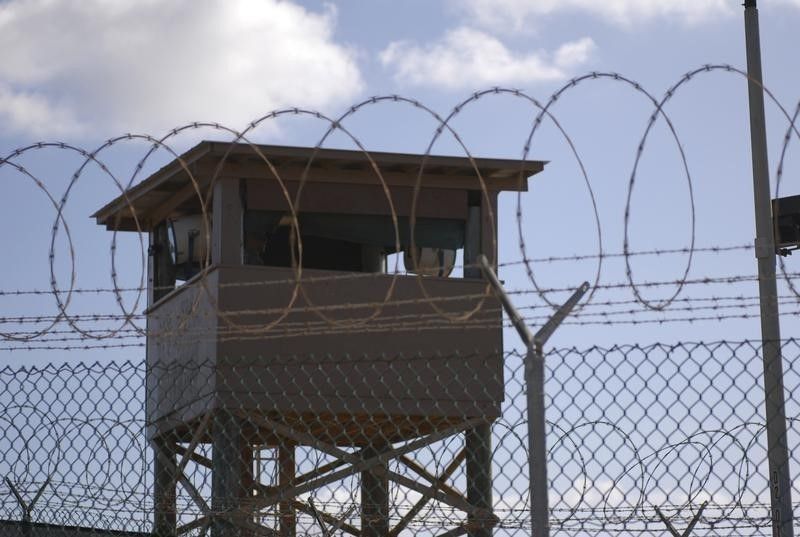
The United States said on Sunday it had transferred a Yemeni inmate from the Guantanamo Bay prison to Italy, bringing the number of detainees at the U.S. naval base in Cuba to 78.
Fayiz Ahmad Yahia Suleiman was approved for transfer nearly six years ago by six U.S. agencies—the Departments of Defense, State, Justice and Homeland Security, the Office of the Director of National Intelligencez and the Joint Chiefs of Staff.
"The United States is very grateful to the Government of Italy for its continued assistance in closing the detention facility at Guantanamo Bay," said Lee Wolosky, the U.S. special envoy for Guantanamo's closure, describing the effort to shut the prison as a "shared goal."
A Pentagon spokesman declined comment on whether the man would be subject to detention in Italy and referred that question to the Italian government, which said it was taking him on "humanitarian grounds" but provided no further details.
The Yemeni man was arrested by Pakistani police and transferred to U.S. custody in December, 2001, meaning he had been in U.S. detention for more than 14 years, according to U.S. military documents posted online by the WikiLeaks website.
U.S. President Barack Obama, who had hoped to close the prison during his first year in office in 2009, rolled out his plan in February aimed at shutting the facility. But he faces opposition from many Republican lawmakers as well as some fellow Democrats.
Most of the 78 prisoners who remain at Guantanamo have been held without charge or trial for more than a decade, drawing international condemnation.
The Guantanamo prisoners were rounded up overseas when the United States became embroiled in wars in Afghanistan and Iraq following the Sept. 11, 2001, attacks on New York and Washington.
The facility, opened by Obama's Republican predecessor, George W. Bush, came to symbolize aggressive detention practices that opened the United States to accusations of torture.
Obama's plan for shuttering the facility calls for bringing the several dozen remaining prisoners to maximum-security prisons in the United States. U.S. law bars such transfers to the mainland.
The United States has struggled to persuade other nations to accept the prisoners because of concerns they could launch attacks and by America's unwillingness to accept them on the U.S. mainland.
Uncommon Knowledge
Newsweek is committed to challenging conventional wisdom and finding connections in the search for common ground.
Newsweek is committed to challenging conventional wisdom and finding connections in the search for common ground.
About the writer
To read how Newsweek uses AI as a newsroom tool, Click here.








